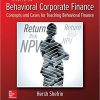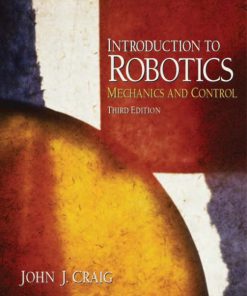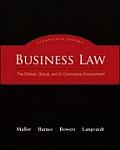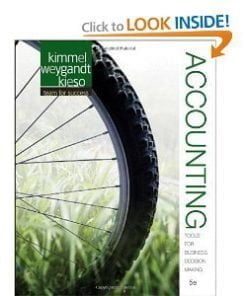Solution Manual for Engineering Mechanics Statics, SI Edition, 4th Edition
$35.00 Original price was: $35.00.$26.50Current price is: $26.50.
Solution Manual for Engineering Mechanics Statics, SI Edition, 4th Edition
Instant download Solution Manual for Engineering Mechanics Statics, SI Edition, 4th Edition pdf docx epub after payment.
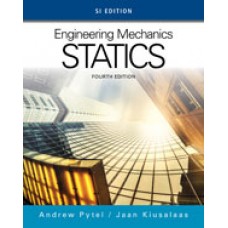
Product details:
- ISBN-10 : 1305577434
- ISBN-13 : 978-1305577435
- Author: Andrew Pytel; Jaan Kiusalaas
ENGINEERING MECHANICS: STATICS, 4E, written by authors Andrew Pytel and Jaan Kiusalaas, provides you with a solid understanding of statics without the overload of extraneous detail. The authors use their extensive teaching experience and first-hand knowledge to deliver a presentation that’s ideally suited to your learning skills. This edition clearly introduces critical concepts using learning features that connect real problems and examples with the fundamentals of engineering mechanics. You learn how to effectively analyze problems before substituting numbers into formulas — a skill that will benefit you tremendously as you encounter real life problems that do not always fit into standard formulas. This book’s concise presentation is complemented by a useful Student Study Guide that clarifies concepts and includes guided solutions to a number of additional equilibrium problems.
Table of contents:
1. INTRODUCTION TO STATICS. Introduction. Newtonian Mechanics. Fundamental Properties of Vectors. Representation of Vectors Using Rectangular Components. Vector Multiplication
2. BASIC OPERATIONS WITH FORCE SYSTEMS. Introduction. Equivalence of Vectors. Force. Reduction of Concurrent Force Systems. Moment of Force About a Point. Moment of Force About an Axis. Couples. Changing the Line of Action of a Force
3. RESULTANTS OF FORCE SYSTEMS. Introduction. Reducing a Force System to a Force and a Couple. Definition of Resultant. Resultants of Coplanar Force Systems. Resultants of Non-coplanar Force Systems. Introduction to Distributed Normal Loads.
4. COPLANAR EQUILIBRIUM ANALYSIS. Introduction. Definition of Equilibrium. Part A: Analysis of Single Bodies — Free-Body Diagrams of a Body. Coplanar Equilibrium Equations. Writing and Solving Equilibrium Equations. Equilibrium Analysis for Single-Body Problems. Part B: Analysis of Composite Bodies — Free-Body Diagrams Involving Internal Reactions. Equilibrium Analysis of Composite Bodies. Special Cases: Two-Force and Three-Force Bodies. Part C: Analysis of Plane Trusses — Description of a Truss. Method of Joints. Method of Sections.
5. NON-COPLANAR EQUILIBRIUM. Introduction. Definition of Equilibrium. Free-Body Diagrams. Independent Equilibrium Equations. Improper Constraints. Writing and Solving Equilibrium Equations. Equilibrium Analysis.
6. BEAMS AND CABLES. Introduction. Part A: Beams — Internal Force Systems. Analysis of Internal Forces. Area Method for Drawing V- and M- Diagrams. Part B: Cables – Cables Under Distributed Loads / Cables Under Concentric Loads.
7. DRY FRICTION. Introduction. Coulomb’s Theory of Dry Friction. Problem Classification and Analysis. Impending Tipping. Angle of Friction; Wedges and Screws. Ropes and Flat Belts. Disk Friction.
8. CENTROIDS AND DISTRIBUTED LOADS. Introduction. Centroids of Plane Areas and Curves. Centroids of Curved Surfaces, Volumes, and Space Curves. Theorems of Pappus-Guldinus. Center of Gravity and Center of Mass. Distributed Normal Loads.
9. MOMENTS AND PRODUCTS OF INERTIA OF AREAS. Introduction. Moments of Inertia of Areas and Polar Moments of Inertia. Products of Inertia of Areas. Transformation Equations and Principal Moments of Inertia of Areas. Mohr’s Circle for Moments and Products of Inertia.
10. VIRTUAL WORK AND POTENTIAL ENERGY. Introduction. Planar Kinematics of a Rigid Body. Virtual Work. Method of Virtual Work. Instant Center of Rotation. Equilibrium and Stability of Conservative Systems. Appendix A: Numerical Integration — Introduction. Trapezoidal Rule. Simpson’s Rule. Appendix B: Finding Roots of Functions — Introduction. Newton’s Method. Secant Method. Appendix C: Densities of Common Materials. Answers. Index.
People also search:
Engineering Mechanics Statics, SI Edition, 4th Edition
Engineering Mechanics Statics, SI Edition, 4th Edition pdf
Engineering Mechanics Statics
|
principles of statics in engineering mechanics
|
what is friction in engineering mechanics
Related products
Solution Manual
Solution Manual for Absolute C++, 5/E 5th Edition Walter Savitch
Solution Manual
Solution Manual for Introduction to Robotics Mechanics and Control 3rd Edition by Craig
Solution Manual
Solution Manual
Solution Manual
Solution manual for Accounting: Tools for Business Decision Making Kimmel Weygandt Kieso 5th Edition
Solution Manual
Solution Manual
Prentice Hall’s Federal Taxation 2014 Comprehensive Rupert 27th Edition Solutions Manual



